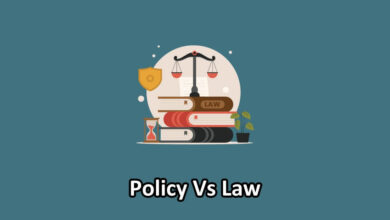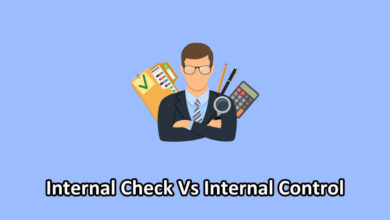Difference Between Customer and Consumer [With Table]
In today’s fast-paced world of business and marketing, understanding these concepts is more crucial than ever. What sets a customer apart from a consumer, you ask? This blog aims to demystify this question while delving into the complete difference between customer and consumer and related ideas that play a pivotal role in the world of commerce.
Not only will we clarify the differences, but we’ll also shed light on related ideas that can supercharge your understanding of consumer behavior and market dynamics.
Customer Vs. Consumer (A Comparison)
| Customer | Consumer |
|---|---|
| A customer is a person or entity that purchases goods or services from a business or seller. | A consumer is an individual or entity that uses or consumes products or services, often but not always after purchasing them. |
| Customers are responsible for making payments to acquire products or services. | Consumers may not always be the ones who pay for the product; it can be a gift or provided by an organization. |
| They typically provide feedback related to product features, pricing, and their overall experience as purchasers. | They provide feedback regarding the usability, functionality, and user experience of the product itself. |
| Customers acquire products or services with the primary purpose of meeting their own needs or the needs of their business or organization. | Consumers acquire products or services primarily for personal use and enjoyment. |
| They hold influence over the choice of products or services a business offers because they make purchasing decisions. | They influence product design and improvement through their preferences and usage habits, impacting how products evolve. |
| Businesses often build relationships with customers to foster loyalty and repeat business. | Consumers may not have a direct relationship with the business; their focus is primarily on the product itself. |
| Customers have the ability to resell products or services if they choose to do so. | Consumers typically have the right to use and consume products or services for their personal use but may have limitations or restrictions on reselling. |
Who is a Customer?
Customers are the lifeblood of any business. They are individuals or entities that purchase products or services from a company in exchange for money. Customers can be individuals, businesses, or even government agencies. Essentially, anyone who pays for a product or service becomes a customer.
Types of Customers
- Individual Customers: These are regular consumers who make personal purchases.
- Business Customers: Companies that buy products or services to support their operations.
- Government Customers: Government agencies that procure goods and services.
- Wholesale Customers: Businesses that buy in bulk for resale.
- Retail Customers: Individuals who purchase products from retail stores for personal use.
Who is a Consumer?
On the other hand, consumers are the end-users of a product or service. They are the ones who actually use or consume the product. While consumers are often customers, not all customers are consumers. For example, a company purchasing office supplies (customers) may have employees who use those supplies (consumers).
Types of Consumers
- End Consumers: Individuals who directly use a product.
- Industrial Consumers: Businesses that use products as part of their manufacturing processes.
- Commercial Consumers: Entities that use products for commercial purposes, like hotels use toiletries for guests.
- Institutional Consumers: Organizations like schools and hospitals that use products for their operations.
- Intermediate Consumers: Entities that buy products for further processing, like a bakery using flour to make bread.
Examples of Customers and Consumers
Example 1:
- Customer: A local bakery orders flour and sugar from a wholesale supplier for making their baked goods.
- Consumer: The customers who walk into the bakery to buy and eat pastries made from flour and sugar are consumers.
Example 2:
- Customer: An IT consulting firm purchases a software solution to improve its project management.
- Consumer: The employees of the consulting firm who use the software for project management tasks are consumers.
Characteristics of Customer and Consumer
Characteristics of Customers
Customers are characterized by their purchasing behavior, preferences, and expectations. They:
- Provide Revenue to Businesses: Customers are the source of income for companies, making their role pivotal in sustaining the business.
- Seek Value for Their Money: Customers look for products or services that offer benefits commensurate with the price they pay.
- May Have Diverse Preferences and Needs: Customers’ tastes and requirements can vary widely, necessitating product variety.
- Expect Good Customer Service: Providing excellent customer service is crucial for retaining customers and building brand loyalty.
- Influence Product Development through Feedback: Customer input can shape product features, pricing, and overall strategy.
Characteristics of Consumers
Consumers, as end-users, have distinct characteristics:
- Use Products for Personal or Professional Reasons: Consumers apply products in their personal lives or work environments.
- Seek Functionality, Quality, and Convenience: Consumers prioritize products that fulfill their intended purpose, are well-made, and offer ease of use.
- May be Influenced by Marketing and Advertising: Effective marketing campaigns can sway consumer choices and preferences.
- Can Provide Valuable Feedback on Product Usability: Feedback from consumers is invaluable for refining product design and enhancing user experience.
- Drive Product Demand: Consumer demand is a primary driver of product sales and market trends.
Key Differences Between Customer and Consumer
Now, let’s explore the six key differences between customers and consumers in more detail:
- Role: Customers play the role of purchasers; they exchange money for products or services. In contrast, consumers play the role of users; they are the individuals who make practical use of the purchased items.
- Scope: The scope of customers is broad and includes individuals, businesses, and government entities. In contrast, consumers are primarily individuals who directly utilize the product.
- Feedback: Customers typically provide feedback related to product features, pricing, and their overall experience as purchasers. Consumers, on the other hand, provide feedback regarding the usability, functionality, and user experience of the product itself.
- Relationship: Businesses often build relationships with customers to foster loyalty and repeat business. On the other hand, consumers may not have a direct relationship with the business; their focus is primarily on the product itself.
Conclusion
In this article, we’ve explored the distinctions between customers and consumers, highlighting their roles, characteristics, and differences. Customers are the buyers who drive revenue, while consumers are the end-users who shape product demand. Understanding these differences is crucial for businesses.
As we look forward to 2023, the evolving landscape of customer and consumer dynamics will continue to impact businesses. Staying attuned to emerging trends and the evolving relationship between customers and consumers will be key to success in the ever-changing marketplace.




3 Comments